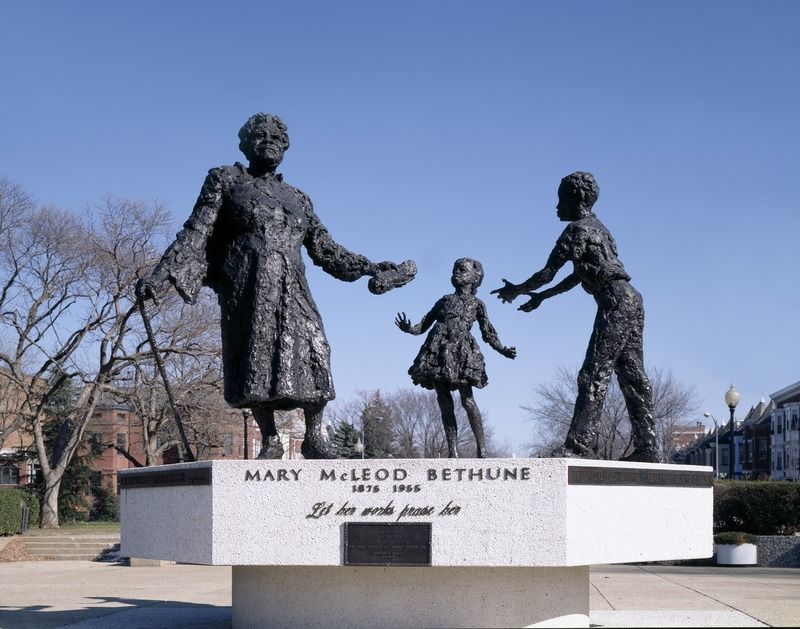Simon of Cyrene and Mary McLeod Bethune: A Lenten Reflection
In the stories I heard growing up, Simon of Cyrene was a black man. While the association may stem from Cyrene’s location in North Africa (modern-day Libya), its power lies in racial experience.

Black folk claim Simon with reference not to geography but to identity. Simon’s blackness is truth-telling and empowering. It names the ongoing reality of social hostility and forced labor imposed upon blacks the world over. It also names the dignity, power, and humanity black people have had in the face of half a millennium of such oppression. Simon of Cyrene, the black man in society, helping God carry his burden.
Almost daily, I pass the Mary McLeod Bethune Memorial in Lincoln Park in Washington, D.C. Erected in 1974—the first statue on public land in the U.S. capital to honor a woman and an African-American—the memorial remembers the famous African American educator, activist, stateswoman, and philanthropist who assumed these roles at a time when society was hell-bent on denying them to her and others like her. Mary embodied the motto “lifting as we climb” and in this, reminds me of Simon.
In Mary and Simon we see the oppressed helping the oppressed. This image speaks not only to the depths of oppression but also to the subjectivity and power of the oppressed. I imagine that Simon was a profound presence of solidarity to Jesus as they struggled together to Calvary. Forced to help Jesus carry the cross, Simon may have ignored his companion–or he may have helped him with intention, perhaps shouldering more of the cross when Jesus could not, perhaps pausing to help Christ catch his breath. Even without saying a word, Simon showed to God and the world the existence of agency in suffering and thus, the power of the oppressed.
The memorial to Mary in Lincoln Park depicts her passing on her legacy to two black children. It is a clear foil to the other statue in the park, the one for which it is named: a pillar on top of which Abraham Lincoln stands, a figure of white beneficence, overlooking a kneeling black slave. Against the flattened victimization that statue portrays, the memorial to Mary reframes the narrative of suffering. Simon of Cyrene and Mary McLeod Bethune retell the story of oppression, revealing the agency, dignity, power, and compassion of those whom the world would say have none.